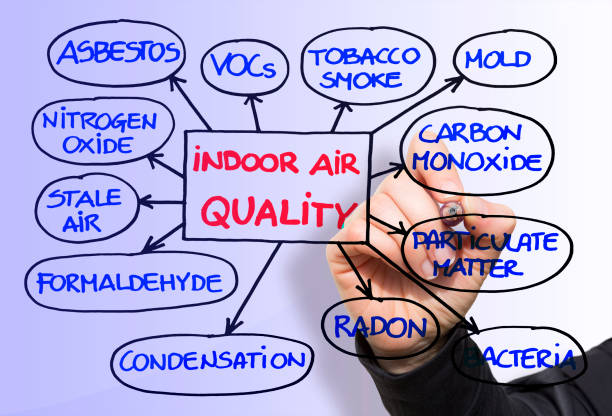One step away from the beginning of the 2021/22 school year and in consideration of the persistence of the health emergency caused by COVID-19, the need to ensure maximum healthiness of indoor spaces for teachers and students is becoming increasingly prevalent.
The Department of Education is also moving in this direction, with a circular sent last July to the directors of the Federal School Offices, in which the indications of the Technical Scientific Committee on this issue are reported., given the current situation, the primary aim is to achieve every condition to encourage face-to-face teaching, i.e. to ensure the highest sanitation in spaces such as classrooms, laboratories, gyms, service areas. , the corridors, but also the courtyards and gardens. The school environment has the key role of building all social and interpersonal relationships necessary to create the vital substrate for the development of children and young people.
Distance learning: Last Resort
We will therefore consider distance learning as the last possible option, and the focus will be on all school environments. Besides the extension of vaccination coverage and the maintenance of the usual rules of common sense (use of personal protective equipment such as masks and hand sanitizing gel, social distancing, limited entry and exit, and so on), activities such as daily cleaning, accurate and repeated, all spaces will play a central role.
However, particular attention must also be paid to indoor air quality, a fundamental operation for the promotion and protection of the health of those who frequent the spaces: with schools, the benefit will be transversal and will affect students, teaching staff, and technical-administrative, support staff, any professionals cleaning belonging to external companies, not only for healthy individuals but also and above all for those with specific needs or particular frailties (for example allergic or asthmatic subjects).
Because keeping indoor air clean and sanitized is always important
The COVID-19 report regarding clean air underlines how a series of studies carried out on indoor public environments of different types, having in common the high rate of the traffic of people and the inadequacy of ventilation have shown a risk of exposure to COVID-19, especially in the presence of infected individuals, much higher than in environments in which the dilution of viral particles can guarantee a marked reduction of the risk itself.
In consideration of this, we have drawn a series of indications and preventive measures to be implemented to guarantee the best possible air quality to the interior spaces.
The first and fundamental one concerns the constant exchange of air, both through natural ventilation (opening of doors and windows) and controlled, centralized ventilation or with the support of air purifiers. We must always consider the movement and exchange of indoor air , carefully evaluating the operating conditions of the systems and their maintenance if required.
Attention also to parameters that can influence the risk of spreading potentially pathogenic microorganisms: air temperature and humidity must not be too low or too high, as they play an important role in the individual’s health’s respiratory system and in evaporation droplets and the viability and distance traveled of the SARS-CoV-2 virus.
Not only Coronavirus: also pay attention to the concentration of any pollutants,
Another factor that will affect the quality of indoor air in schools is the concentration of any pollutants in certain areas or rooms, particularly during performing educational activities.
In this sense, it will therefore be essential to assess the levels of exposure to these substances and, alternatively, to confirm compliance with the air quality values or to take effective action to reduce emission levels. Correct air exchange, associated with the systematic reduction of missive pollutants, will make it possible to significantly reduce the risk for people: to get this result, schools should be able to benefit from properly designed ventilation systems or solutions that make efficient and effective air exchange thus helping to reduce the risks of exposure and contamination by dangerous and pathogenic substances, including Coronavirus.
Indoor air sanitation: the three aspects to consider before buying the purifier
The air purifier, sometimes also called a purifier, can prove to be an effective ally to contribute to good indoor air quality in synergy with both natural and mechanical ventilation and air exchange systems. Its role is to suck and clean the air to improve its quality by eliminating any polluting particles, allergens, and bad smells.
Many air conditioners with integrated purifiers, and sometimes even humidifiers, are currently available on the market. However, it is important to keep in mind that an air conditioner is not necessarily also a purifier, and in most opinion, we do not build specifically these appliances to purify the air but to eliminate dust during the conditioning action.
If you wish to purchase a purifier for sanitizing indoor air there are at least four parameters that you will need to take into consideration:
- The system should be able to guarantee at least one air exchange per hour: it is, therefore, essential to evaluate the volume of air that the machine can handle and whether we can also do it in the presence of people, 24 hours a day.
- The need for maintenance of the machine, the disposal of any spare parts. Their replacement are all factors that influence costs.
- The possible presence of HEPA filters, which do not eliminate bacteria. It merely collects them, generates an ideal crop field that could contaminate indoor environments once they expelled again the air.
- The ability to eliminate many pathogenic microorganisms, including the smallest viruses and bacteria, as well as airborne allergens.
To meet the current and evolved needs of indoor air sanitation, some professional cleaning company offers the Sanitizer and Purifier without a filter HEPA filter, a device that boasts a very high filtration capacity and eliminates even the smallest airborne particles without clogging. Solving at the root of the problem of periodic replacement of the filters that are typical air sanitization systems.
Read More: Indonesia To Offer Infrastructure Projects At IMF-World Bank Meeting















